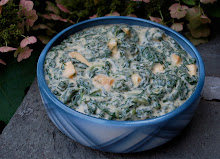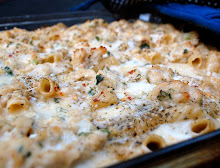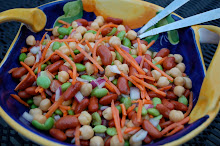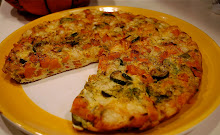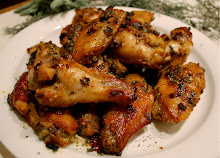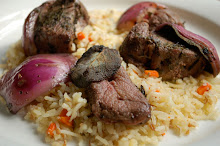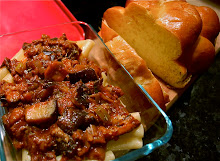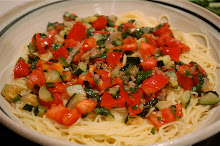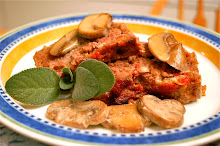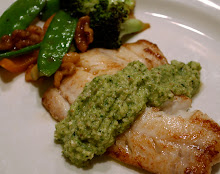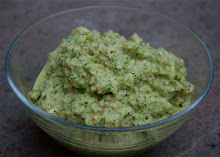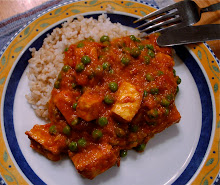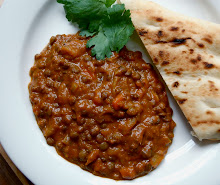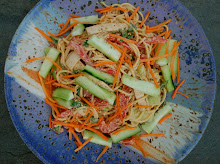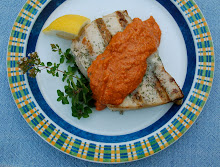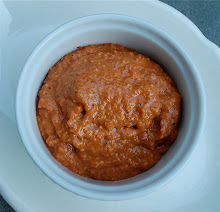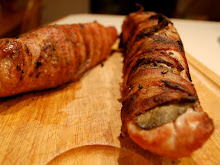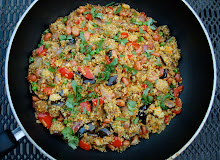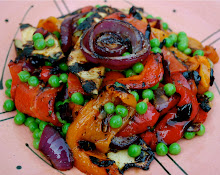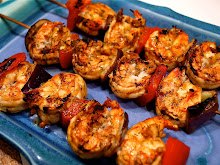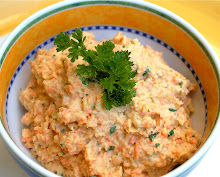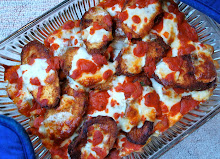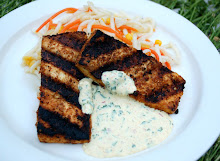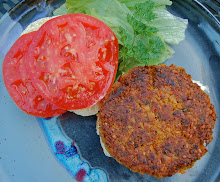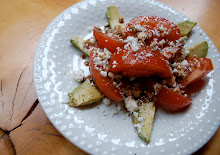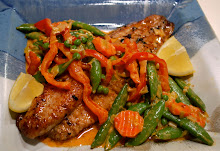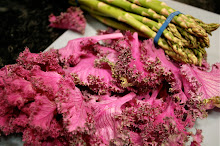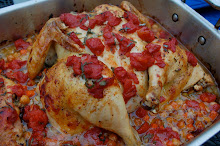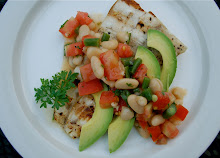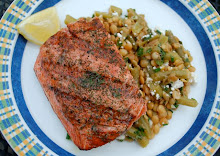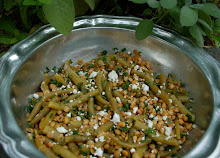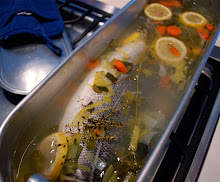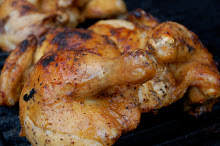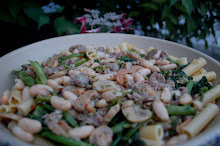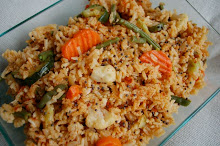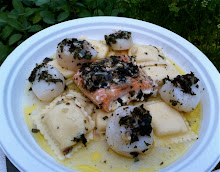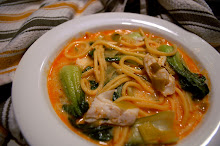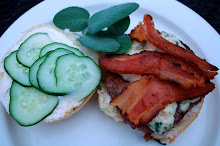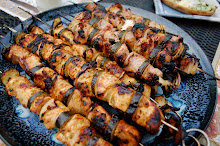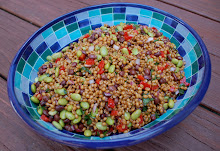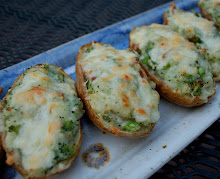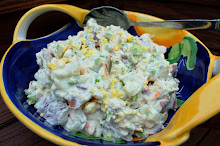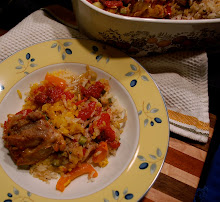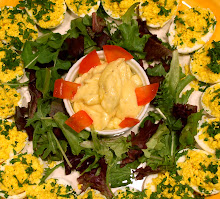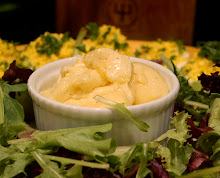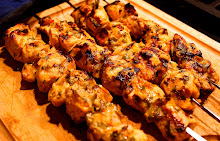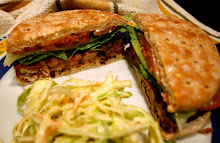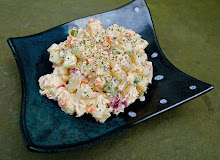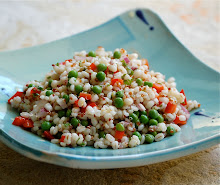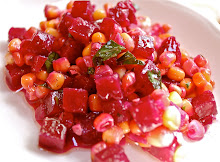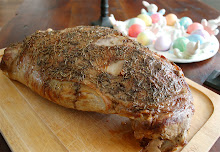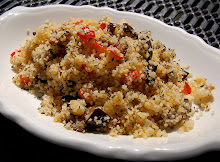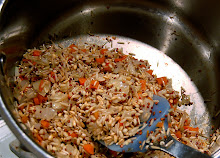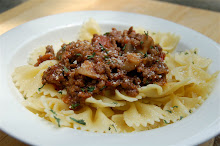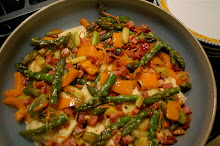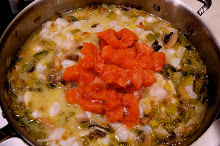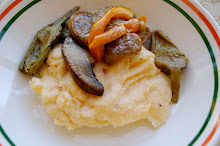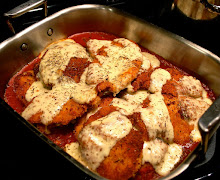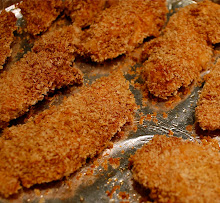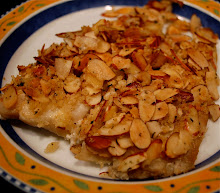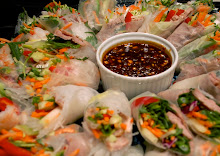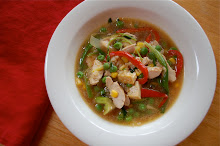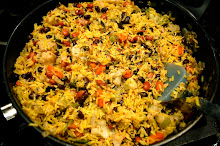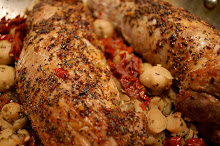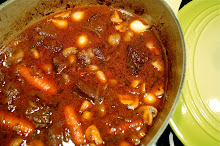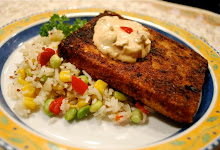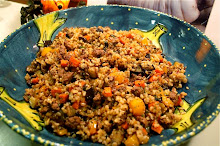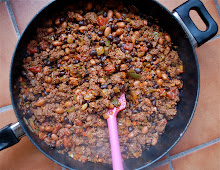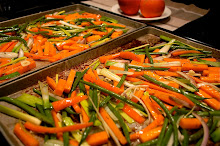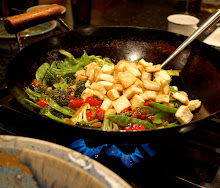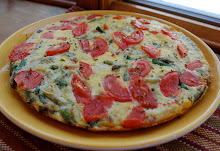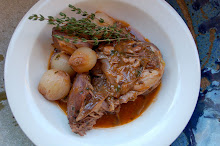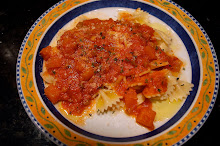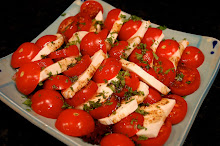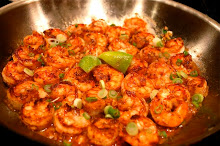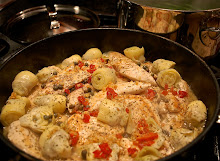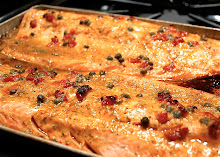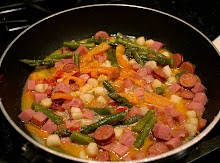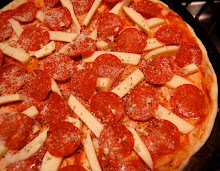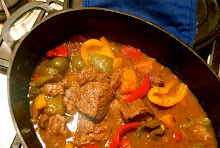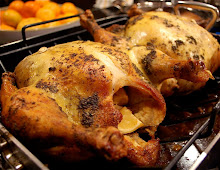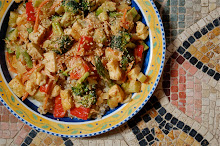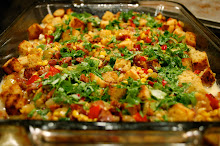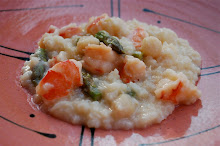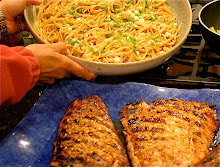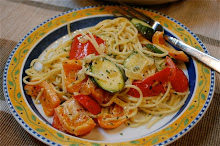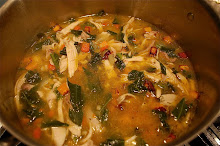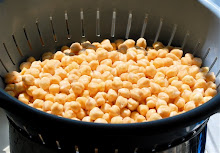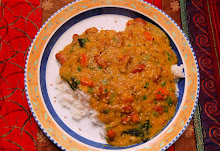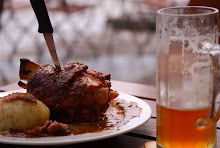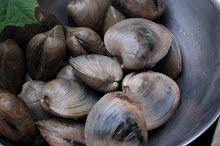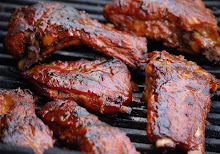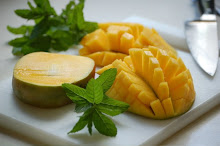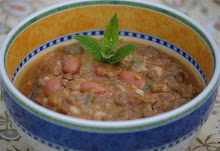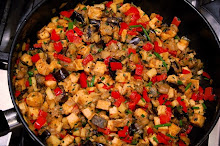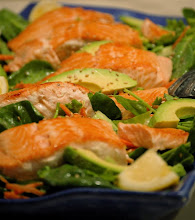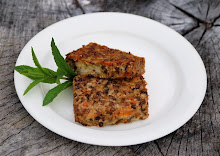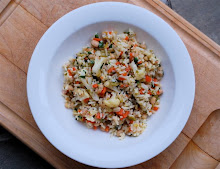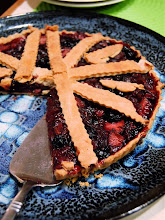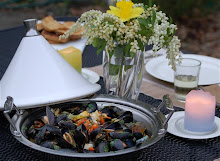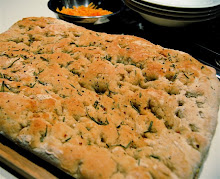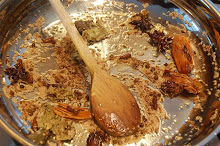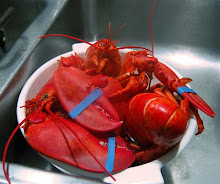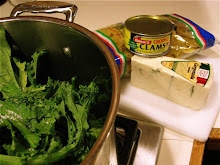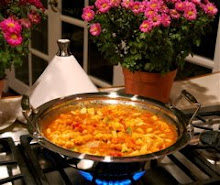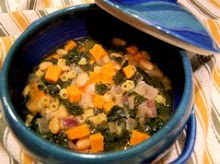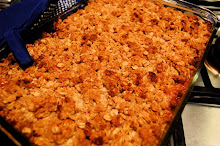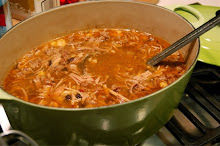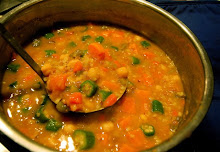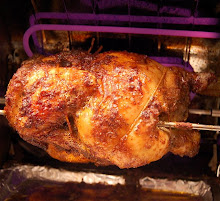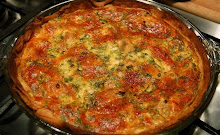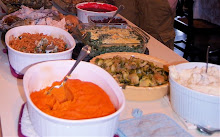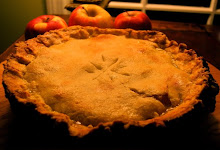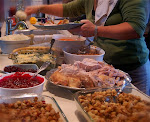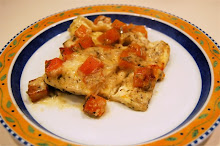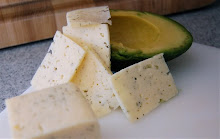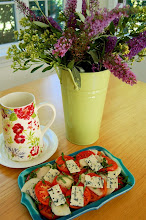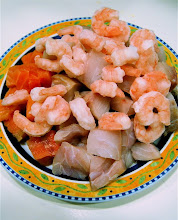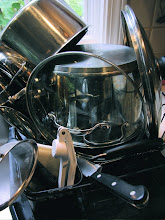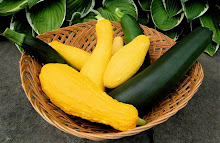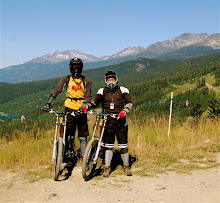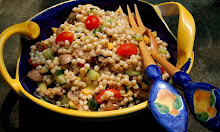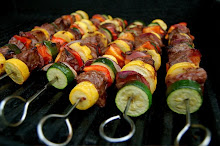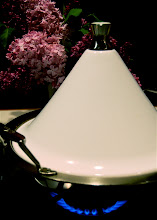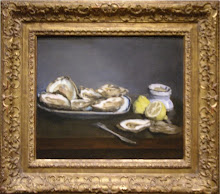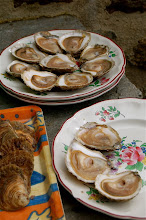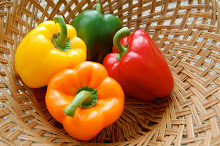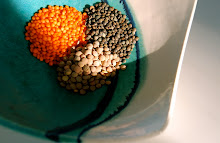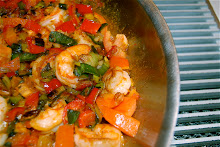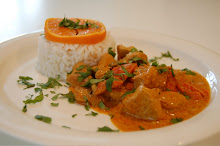I was recently quite surprised at 30,000 feet over the Pacific, in a good way. The only way to be surprised at 30,000 feet. Returning from Seoul, South Korea, I was offered a very interesting dinner choice.
Don't you hate the way steward/esses offer you the "chicken or the pasta" and when you ask for any details, all you get is "Its chicken with vegetables" or "Its pasta with sauce". Thanks for that; now I can make a really fully informed choice. I'm not really complaining - steward/esses have an awfully difficult job, but it is an American past-time to complain about airplane food.
Well I was surprised. I was offered "the chicken" or the Bulgogi Ssambap. Wow, you gotta be kidding me. The Korean National Dish. How are you going to do Bulgogi Ssambap - this I had to see. A fresh country dish of lettuce or lime leaves, grilled meat or fish, some rice, and an assortment of fresh condiments and bean pastes in small dishes scattered around the table - quite complex, and one of Korea's best dishes ever. The diner wraps the rice and other offerings in the lettuce leaves and eats it like a taco or a wrap.
The grilled beef was served in it's own heated container, and all the other accoutrements were chilled and served in a pleasing arrangement around it. They had little tubes of bean pastes - smaller and way cuter than travel sized tooth paste. And way better tasting. They had 2-3 different kimchis, they had lettuce leaves, they had rice; they even had a little quick-reference guide on how to eat this darn thing. With diagrams! Fantastic.
And the beef really was very good. Somebody really thought this through. It was the best ethnic food I have ever had in the stratosphere. It's gotta be easier at home, though, so I gave it a try in a simple way. Go discuss with a real Korean if you want a more authentic approach. Otherwise, give this a try for a fresh take on summer grilling.

Marinade:
1/4 cup Gochujang Korean red pepper paste
1/4 cup soy sauce
1 Tbsp seasoned rice vinegar
2 Tbsp dry sherry
2 cloves garlic, minced
1-inch fresh ginger, minced
1 lb pork or beef, cut into strips about 1/2 x 2-inches
about 12 baby romaine lettuce leaves
1 red pepper, cut into strips
1 purple onion, sliced
2 cloves garlic, sliced
1 cup kimchi, coarsely chopped
Whisk the sauce ingredients together and toss with the meat. Allow to marinate at least an hour, or ideally overnight in the refrigerator.
Prepare the grill. Heat a bit of canola oil in a small wok or in a skillet. Sauté the pepper and onion for about 5 minutes. Add the garlic and cook another 2-3 minutes. Add the kimchi and heat through. Remove from heat and serve in a bowl at the table.
Meanwhile, prepare the table, laying out the plates, the lettuce leaves on a platter, the kimchi mix and even a bit of Korean Ssamjang dark bean paste, if you have it. Also offer some form of white rice (here I mix with red quinoa). Grill the meat strips, pulling them out of the marinade with a bit of a shake. Grill the strips on high heat, a minute or two per side - they cook quickly. Serve on a platter amongst the other table offerings.
Diners can layer lettuce, kimchi mix, meat and bean paste. Then wrap the lettuce and eat with their hands, or with a fork and knife.
Serves 4.
Cook's Note: If Kimchi is new to you, give it a try. It is a highly flavored Korean seasoned cabbage condiment, always served on the side. You can find it in most grocers in the the fresh Asian or vegetarian sections. Gochujang and Ssamjang are Korean bean pastes, hot and sweet respectively.
The Korean Bulgogi Ssambap table can be very complex, and this is in no way a description of an authentic presentation. This is just a simple version that works in a straightforward way. So try to get your hands on the Korean kimchi and bean pastes from a Korean or Asian grocer - well worth the effort.
 1 Tbsp love oil plus 1 Tbsp butter
1 Tbsp love oil plus 1 Tbsp butter





































































































































































































































































































































































































































































































































































































































































































































































































































































































